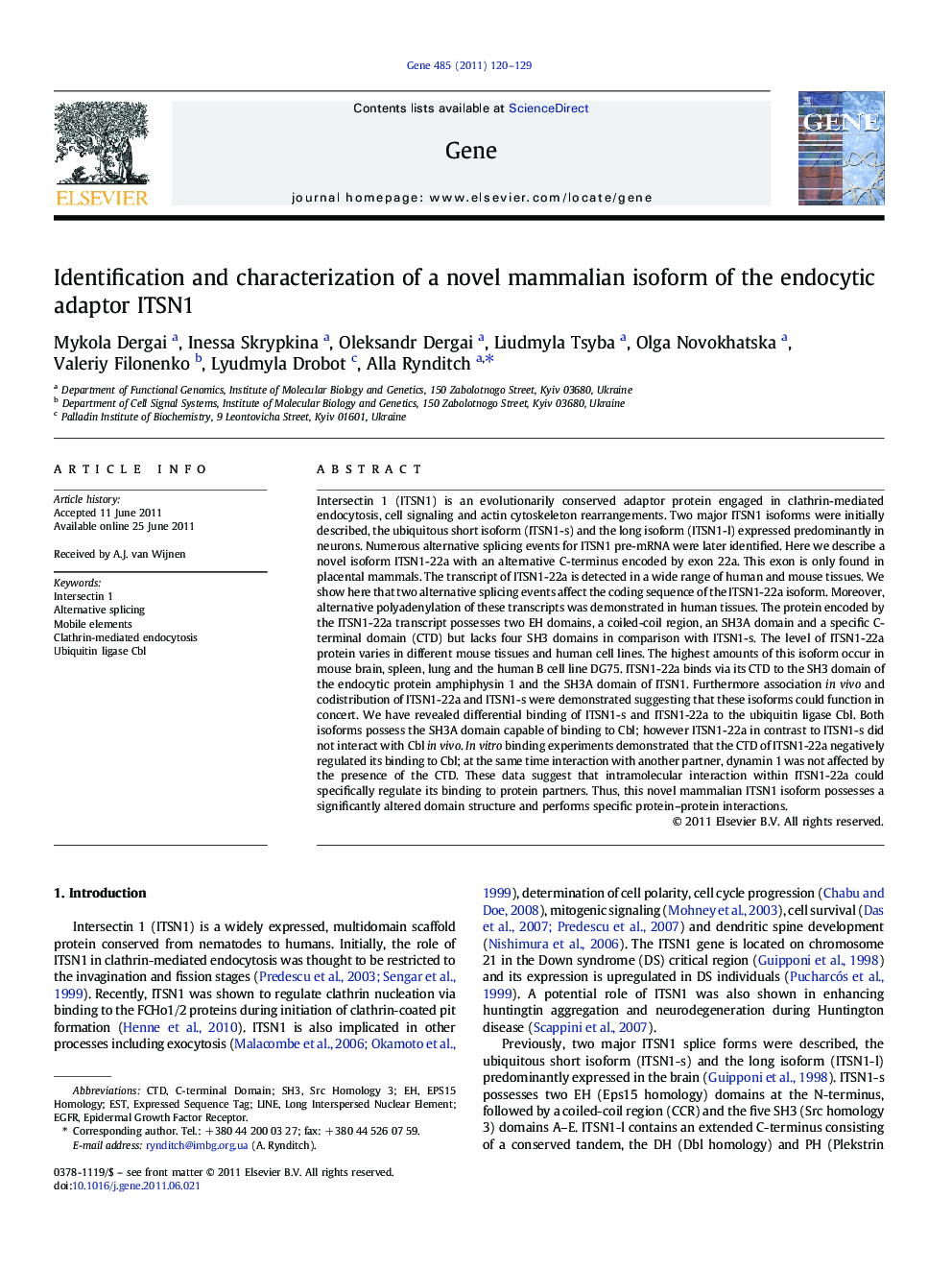| Article ID | Journal | Published Year | Pages | File Type |
|---|---|---|---|---|
| 2818345 | Gene | 2011 | 10 Pages |
Intersectin 1 (ITSN1) is an evolutionarily conserved adaptor protein engaged in clathrin-mediated endocytosis, cell signaling and actin cytoskeleton rearrangements. Two major ITSN1 isoforms were initially described, the ubiquitous short isoform (ITSN1-s) and the long isoform (ITSN1-l) expressed predominantly in neurons. Numerous alternative splicing events for ITSN1 pre-mRNA were later identified. Here we describe a novel isoform ITSN1-22a with an alternative C-terminus encoded by exon 22a. This exon is only found in placental mammals. The transcript of ITSN1-22a is detected in a wide range of human and mouse tissues. We show here that two alternative splicing events affect the coding sequence of the ITSN1-22a isoform. Moreover, alternative polyadenylation of these transcripts was demonstrated in human tissues. The protein encoded by the ITSN1-22a transcript possesses two EH domains, a coiled-coil region, an SH3A domain and a specific C-terminal domain (CTD) but lacks four SH3 domains in comparison with ITSN1-s. The level of ITSN1-22a protein varies in different mouse tissues and human cell lines. The highest amounts of this isoform occur in mouse brain, spleen, lung and the human B cell line DG75. ITSN1-22a binds via its CTD to the SH3 domain of the endocytic protein amphiphysin 1 and the SH3A domain of ITSN1. Furthermore association in vivo and codistribution of ITSN1-22a and ITSN1-s were demonstrated suggesting that these isoforms could function in concert. We have revealed differential binding of ITSN1-s and ITSN1-22a to the ubiquitin ligase Cbl. Both isoforms possess the SH3A domain capable of binding to Cbl; however ITSN1-22a in contrast to ITSN1-s did not interact with Cbl in vivo. In vitro binding experiments demonstrated that the CTD of ITSN1-22a negatively regulated its binding to Cbl; at the same time interaction with another partner, dynamin 1 was not affected by the presence of the CTD. These data suggest that intramolecular interaction within ITSN1-22a could specifically regulate its binding to protein partners. Thus, this novel mammalian ITSN1 isoform possesses a significantly altered domain structure and performs specific protein–protein interactions.
